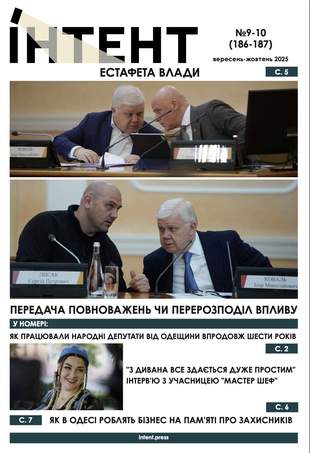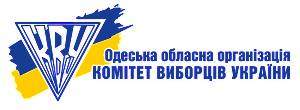Меню
Social networks
Sections
March 30, 2025, 8:14 a.m.
Ukraine's Dark History: The Slave Trade in the Black Sea Region
Цей матеріал також доступний українською1311
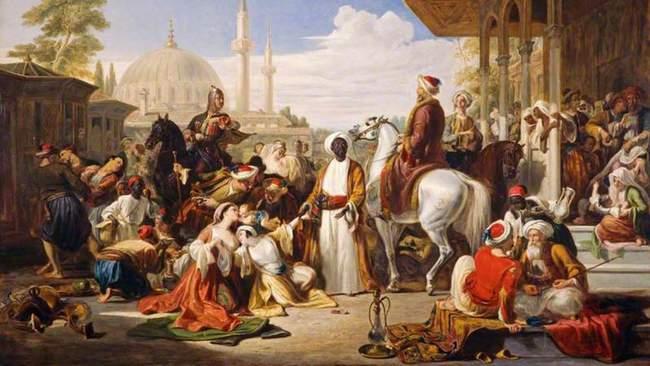
William Allan. The slave market. Image: Wikipedia
The slave trade is a shameful page in human history that brought significant profits. Today, we are ashamed to mention it and pretend that it did not exist. Unfortunately, it also existed in the Black Sea region.
In the Middle Ages, Ukraine was one of the centers of human hunting, and live goods were sold not only in the Crimea but also in Budzhak, which had ports convenient for navigation. In the thirteenth and early eighteenth centuries, Budzhak provided slaves not only to Middle Eastern but also to European countries.
The slave trade brought great profit. In 1272, slaves from Circassia were first mentioned. They were bought en masse from Caffa. The acts of Antonio de Ponzo of February 21 and May 12, 1361, record the names of slave traders - Tatars Tobok, Daok, and Temir - who sold yasyr in Kiliya. Also mentioned are a slave of Tatar origin, 18-year-old Tandis and 28-year-old Greek Maria. The acts of Licostomo of 1373 mention "George of Genoa, a former Tatar".
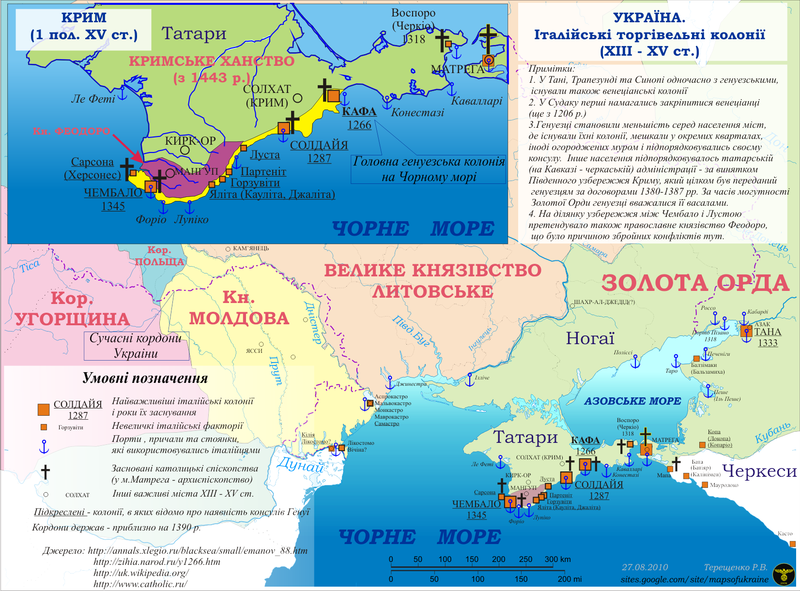
Italian trading colonies. Image by Wikipedia
In 1289-1290, Circassians accounted for 44% of all slaves sold, Abkhazians for 11%, and Cumans for 3.5%. Accordingly, in Genoa, 45% of slaves were Circassians. However, 12% were Bulgarians and 5% Rusyns. This indicates that the latter were primarily taken from the Danube-Dniester interfluve. Indeed, the number of slaves in Kaffa (now Feodosia - ed.) was relatively small. In 1385-1386, a tax of 8 aspers for the sale of each slave was recorded in notarized deeds. Taking into account the profit of 4240 aspers, the number of slaves did not exceed 530 people.
Aspr or aspra (from the Greek literally "white", derived from the late Latin asper) is a common name for small coins with different silver content minted in the late Byzantine Empire and in some countries that emerged on its territory.
The price of slaves depended on their health, education, gender, age, and nationality. In particular, in 1290, a 30-year-old Hungarian, Pavel, cost 130 aspars, and a 30-year-old Abkhaz, Venali, 500 aspars. Certain patterns can be traced in the notarial deeds: the average age of men was 11.3 years, and women 15.6 years. The average cost of a girl aged 10-12 was 400-450 aspars, and a boy 340-750 aspars. In Genoa itself, the cost of a slave increased by about 100-130 aspers. In 1291, a 14-year-old Circassian was bought in Kaffa for 470 aspers, and resold in Genoa for 575 aspers.
In Genoa, slaves were actively bought by Catalans, more often Rusyns and Bulgarians. In 1413, the Catalans bought 35 Rusyns, 22 Tatars (11 women), and 5 Bulgarians, which indicates the scale of the export from the Danube factors.
Another market was Florence. In 1366-1397, the Genoese supplied 274 Tatars, 13 Rusyns, and 30 Greeks, a total of 377 slaves.
In 1379, Genoa and Egyptian Sultan Haji II signed an agreement to supply slaves for the Mamluk guard from the Black Sea steppe (Tatars, Rusyns, and Polovtsians). In 1431, Egypt's Sultan Barsbay agreed with the Italians to buy slaves directly from their Black Sea factories, in particular in Kaffa. Not surprisingly, in 1440 alone, two thousand slaves were brought to Egypt from there.
About two thousand slaves were sold annually in Moncastro. According to information from 1438, more than 30 ships with slaves arrived in Constantinople. Over 70 years (1367-1429), the cost of slaves tripled: from 23-40 to 80 ducats. There was a certain specialization of slaves: the Egyptians bought strong men for the military, the Greeks preferred educated captives, and the Italians were interested in farmers.
A striking example of the slave trade of that time was the events in Ilyich in 1454-1455. The owners of Illich, the Senarega brothers, bought 14 Christian prisoners from Moncastro from the Tatars. Although the usual price for a slave ranged from 4-10 florins, the Senaregas offered a ransom of 3400 florins for all of them. The inhabitants of Moncastro freed the prisoners by force and caused the brothers 10 thousand florins in damages, and some of the captured residents of Illichy were sold to the Tatars in Suceava.
Slavery was permanent and did not provide for early release. At the same time, Europeans were not concerned about the fact that Moldovans, Ukrainians, and some Tatars were Christians, i.e. brothers in faith. Unfortunately, the Ukrainian lands of that time resembled nineteenth-century Africa in terms of human trafficking.
In 1484, the Ottoman Porte finally conquered the Danube cities of Kilia and Bilhorod (Moncastro). After the Ottomans captured Bilhorod, more than 4,000 residents were given to the devshirme, another 3,000 peasants from the surrounding villages were captured by the Janissaries and Tatars, and the city itself was renamed Ak-Kerman. In the captured Kiliya, more than 2,000 girls were given to devshirme.
Devşirme was the recruitment of Christian children for training as servants in the palace, administration, or military corps of the kapıkul in the Ottoman Empire, as well as young men drafted through such recruitment.
Despite the horrific consequences of the conquest, the procedure for keeping slaves became regulated by Islamic law, which defined the norms of slavery. The legal norms of slavery in the Crimean Khanate, to which Bujak belonged, were clear and binding on everyone.
One could become a slave in two cases. The first was necessarily a non-Christian (most often a Christian) captured in the so-called territory of war, i.e. not in the lands of an Islamic country. Such a prisoner was called a yasir. He had no legal rights and was considered property, on the level of cattle. His owner could sell him, kill him, give him as a gift, maim him, or exchange him.
Most often, Moldovans, Ukrainians, and Poles were taken as yasyrs. Russians and Roma were not in demand because of their constant desire to escape. Moldovan girls were second only to Circassians in demand and were considered "polite, shy, and good housewives." Among men, Cossack laborers were most often bought.
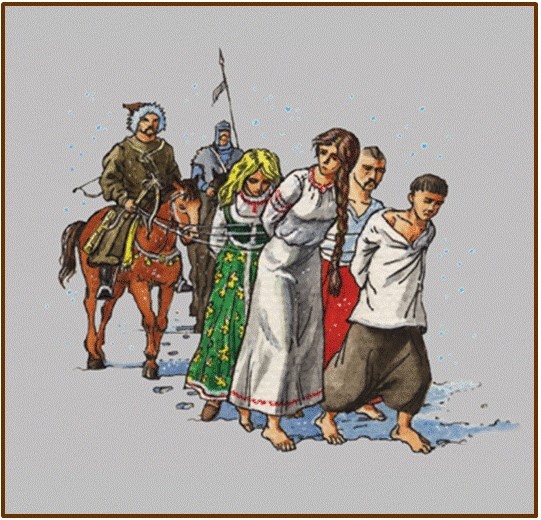
Yasyr. Image by vseosvita.ua
In the second case, a slave could be a Nogatian, a Lipkan (Tatar from the Polish-Lithuanian Commonwealth) who was not a resident of the Crimean Khanate. This interpretation allowed Crimean merchants to buy women and children from the Nogai, especially during times of famine. It was believed that such slaves were loyal and would not betray their masters.
Buying a slave was an expensive affair. The tax (210 akche) was paid in half by the seller and the buyer. According to the laws of the Crimean Khanate, slavery could not exceed 7 years. The owner paid a tax for the slave every 3 years. In the sixteenth and seventeenth centuries, the tax ranged from 210 to 350 akce. The owners tried not to pay this tax more than twice, and after 6 years they let the slaves go free. If the owner did not let the slave go free, the slave could go to court to demand his release. In particular, according to the memoirs of the sixteenth-century traveler Mykhailo Lytvyn, the Tatars allowed Christian slaves who had served for 7-8 years to be freed.
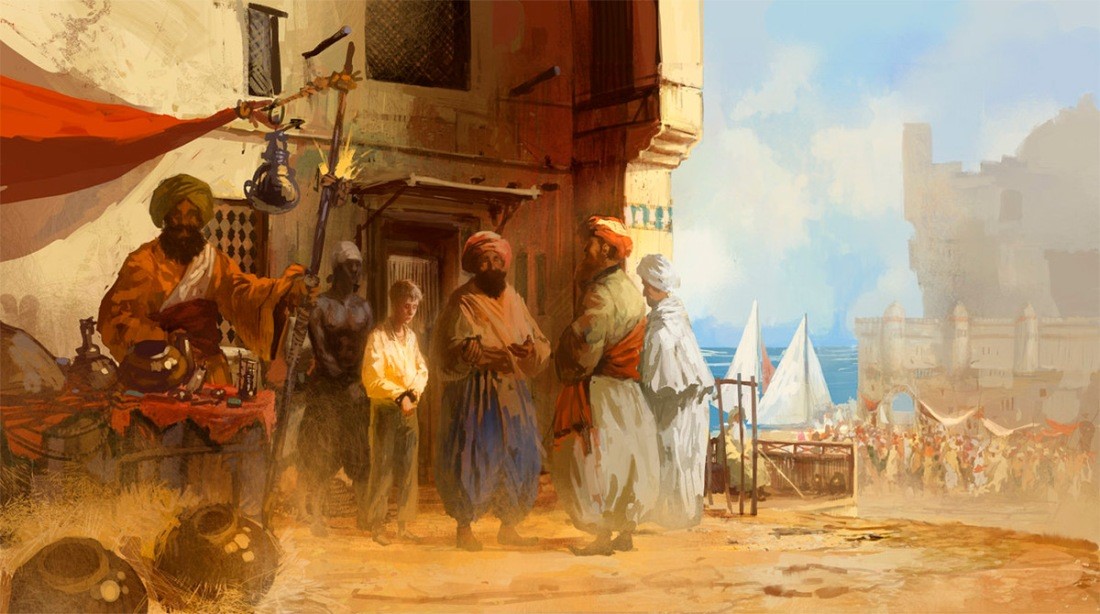
Slave market. Image by islam.in.ua
A slave could also have property and receive a salary. Ordinary harem slaves (witches) received 6 akçe daily. This is despite the fact that clothing, housing, food, and gifts for the holidays were provided free of charge by the owner. The daily remuneration of Sofia, the then-haseki (favorite concubine) of the Ottoman Sultan Murad III, was 1000 akçe; the sultan's sisters also received this amount: Esmahan Sultan - 300 akçe, Gervekhan Sultan - 250 akçe; the sultan's aunt Mihrimah Sultan received 600 akçe. The remuneration in the harem of Tatar murzas and khans was more modest. However, the life of a harem slave was better than that of a village girl of that time.
After 7 years of service, slaves could choose whether to stay or leave the harem. If the owner did not touch the concubine for 9 years, he was obliged to let her go with gifts or find her a husband. If the owner accidentally called the slave "my son" in the presence of witnesses, this was to be a reason for early release.
Of course, the life of slaves was not sweet, but it was very positively different from the living conditions of serfs at that time.
The English traveler Mary Guthrie, who visited the Nogai in 1795-1796, mentioned that they sold their children into slavery. The Tatars were considered "good slaves who would not betray their master, unlike the cunning and lazy Roma and Muscovites."
Usually, Tatars sold their relatives during crop failures and famine. As the traveler E. d'Ascoli recalled: "They have one selling another... for a small price. There were cases of stealing other people's children for sale into slavery. To prevent this, parents used to draw special marks on their infants' faces to help find the child." Slaves were transited through Akkerman and Tatarbunary, and from there to the Danube ports. This is evidenced by the fact that in Tatarbunary there was a position of kapujibashi (head of the palace guard), who collected duties from slave caravans.
In 1767, France developed a project to establish direct trade relations with the Crimean Khanate, with an estimated turnover of 2.5 million livres. According to the German traveler N. Kleeman: "Slaves would be in demand in the German principalities. The purchase of slaves from Circassia in Kafa could bring 2-5 thousand piastres of profit. The best ones were sold to Constantinople. There is an acute shortage of women in the German lands, and it would be convenient to supply them there as well."
The Nogai sold captives (yasyr) and purchased slaves in the port cities of Akkerman, Kilia, and Izmail.
Akkerman was the largest center of the slave trade in the Northwestern Black Sea region and competed with Kafa and Istanbul. In 1601, the Polish envoy to the "king of Perekop," Lavrin Piaskoczynski, wrote: "In Bilhorod(Akkerman) itself, I saw a large number of royal subjects who had been captured in various places." Most of the slaves were Nogai Tatars, Wallachians, Moldovans, and sometimes Ruthenian-Ukrainians.
In the early sixteenth century, Kilia's exports were mostly specialized in the sale of slaves and cattle. According to customs reports, 189 slaves were transported through Tulcha in October-December 1515. In 1516 alone, 1300 slaves were sold. In 1517, another 1593 slaves were sold from Budzhak through the Tulchyn customs.
The volume of the slave trade through Izmail is evidenced by tax collections. In 1592, the inhabitants of Izmail-Gechida paid 357,861 akche of taxes. Most of the fees were taxes on fish and its export - 76 thousand akche (21.3% of all fees). The second largest tax was the tax on grain exports - 70 thousand akche, or 19.6% of all taxes. In third place was the tax on the sale of slaves - 60 thousand akce (16.7%). Moldovans, Ukrainians, and Poles were sold in Izmail. It is not surprising that in 1595 the Cossacks led by S. Nalyvaiko destroyed the city.
Cossack attacks on Akkerman and Kiliya were constant. It was revenge for prisoners. The Cossack attacks of 1603, 1609, and 1632 were devastating for Izmail. In the second half of the eighteenth century, the slave trade declined due to the cessation of Tatar raids on Ukraine and Moldova, and the Nogai of Budzhak had to reorient their activities to a more moderate one.
After the expulsion of Muslims from Budzhak in 1812, slavery took on new features. Budzhak became part of the Bessarabian region, a significant part of which was Moldova. In the former Moldavian principality, slavery of Roma was widely practiced. They made up the vast majority of slaves, who were legally recognized as serfs.
After the transfer of South Bujak to the Moldavian principality in 1856, the status of Roma serfs worsened even further, and their free sale at auctions was allowed.
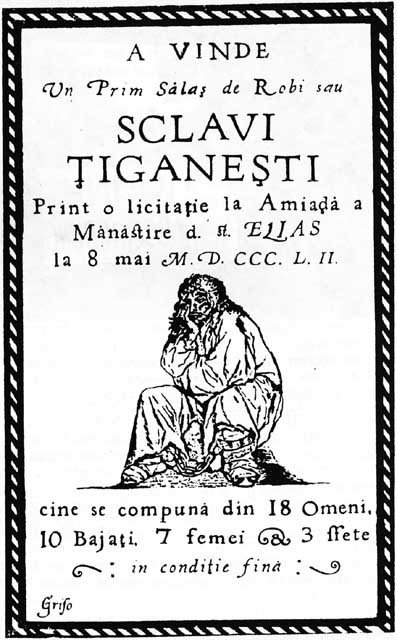
An advertisement for the sale of Roma in Bucharest in 1852.
Slavery was officially abolished in Romania in 1861. However, isolated cases occurred in Bujak in the twentieth century. Moldovan researcher Dmytro Ivanov found out that his grandmother, Hanna Mykolaivna Kyrpale, was sold into slavery in 1920 at the Izmail market by her stepfather, a Romanian boyar from Constanta.
The girl was held there until 1930, when she was found and bought back by her mother. Some cases of slave trade in the region occurred among the Roma until the 90s of the XX century. At the beginning of the 21st century, the forced detention of workers on farms and the trafficking of girls abroad under the guise of laborers became popular.
Андрій Шевченко




